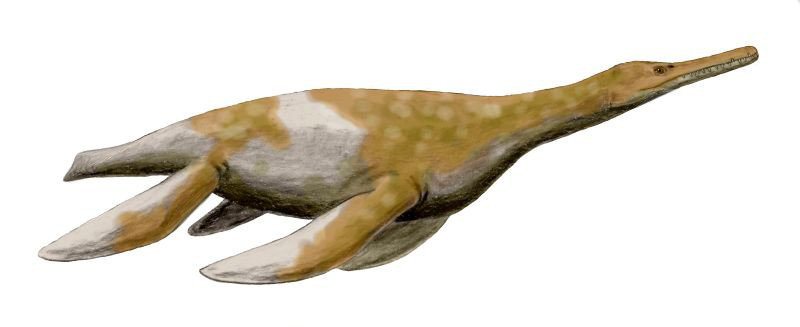Polycotylids on:
[Wikipedia]
[Google]
[Amazon]
Polycotylidae is a family of
 Cladogram after Albright, Gillette and Titus (2007).Albright III, L. B., Gillette, D. D., and Titus, A. L., 2007b
Cladogram after Albright, Gillette and Titus (2007).Albright III, L. B., Gillette, D. D., and Titus, A. L., 2007b
Plesiosaurs from the Upper Cretaceous (Cenomanian-Turonian) Tropic Shale of southern Utah, part 2: polycotylidae
. Journal of Vertebrate Paleontology, v. 27, n. 1, p. 41-58. Cladogram after Ketchum and Benson (2010). Below is a cladogram of polycotylid relationships from Ketchum & Benson, 2011.
Lepidosauromorpha: Cryptocleidoidea: Tricleidia Cretaceous plesiosaurs Aptian first appearances Maastrichtian extinctions Prehistoric reptile families {{plesiosaur-stub
plesiosaur
The Plesiosauria (; Greek: πλησίος, ''plesios'', meaning "near to" and ''sauros'', meaning "lizard") or plesiosaurs are an order or clade of extinct Mesozoic marine reptiles, belonging to the Sauropterygia.
Plesiosaurs first appeared ...
s from the Cretaceous
The Cretaceous ( ) is a geological period that lasted from about 145 to 66 million years ago (Mya). It is the third and final period of the Mesozoic Era, as well as the longest. At around 79 million years, it is the longest geological period of th ...
, a sister group to Leptocleididae
Leptocleididae is a family of small-sized plesiosaurs that lived during the Early Cretaceous period (early Berriasian to early Albian stage). They had small bodies with small heads and short necks. ''Leptocleidus'' and '' Umoonasaurus'' had round ...
. Polycotylids first appeared during the Albian stage of the Early Cretaceous, before becoming abundant and widespread during the early Late Cretaceous. Several species survived into the final stage of the Cretaceous, the Maastrichtian
The Maastrichtian () is, in the ICS geologic timescale, the latest age (uppermost stage) of the Late Cretaceous Epoch or Upper Cretaceous Series, the Cretaceous Period or System, and of the Mesozoic Era or Erathem. It spanned the interval from ...
.
With their short necks and large elongated heads, they resemble the pliosaurs, but closer phylogenetic studies indicate that they share many common features with the Leptocleididae and Elasmosauridae
Elasmosauridae is an extinct family of plesiosaurs, often called elasmosaurs. They had the longest necks of the plesiosaurs and existed from the Hauterivian to the Maastrichtian stages of the Cretaceous, and represented one of the two groups of p ...
. They have been found worldwide, with specimens reported from New Zealand
New Zealand ( mi, Aotearoa ) is an island country in the southwestern Pacific Ocean. It consists of two main landmasses—the North Island () and the South Island ()—and over 700 smaller islands. It is the sixth-largest island count ...
, Australia
Australia, officially the Commonwealth of Australia, is a Sovereign state, sovereign country comprising the mainland of the Australia (continent), Australian continent, the island of Tasmania, and numerous List of islands of Australia, sma ...
, Japan
Japan ( ja, 日本, or , and formally , ''Nihonkoku'') is an island country in East Asia. It is situated in the northwest Pacific Ocean, and is bordered on the west by the Sea of Japan, while extending from the Sea of Okhotsk in the north ...
, Morocco
Morocco (),, ) officially the Kingdom of Morocco, is the westernmost country in the Maghreb region of North Africa. It overlooks the Mediterranean Sea to the north and the Atlantic Ocean to the west, and has land borders with Algeria to ...
, the US, Canada
Canada is a country in North America. Its ten provinces and three territories extend from the Atlantic Ocean to the Pacific Ocean and northward into the Arctic Ocean, covering over , making it the world's second-largest country by tot ...
, Eastern Europe
Eastern Europe is a subregion of the Europe, European continent. As a largely ambiguous term, it has a wide range of geopolitical, geographical, ethnic, cultural, and socio-economic connotations. The vast majority of the region is covered by Russ ...
, and South America
South America is a continent entirely in the Western Hemisphere and mostly in the Southern Hemisphere, with a relatively small portion in the Northern Hemisphere at the northern tip of the continent. It can also be described as the southe ...
.
Phylogeny
 Cladogram after Albright, Gillette and Titus (2007).Albright III, L. B., Gillette, D. D., and Titus, A. L., 2007b
Cladogram after Albright, Gillette and Titus (2007).Albright III, L. B., Gillette, D. D., and Titus, A. L., 2007bPlesiosaurs from the Upper Cretaceous (Cenomanian-Turonian) Tropic Shale of southern Utah, part 2: polycotylidae
. Journal of Vertebrate Paleontology, v. 27, n. 1, p. 41-58. Cladogram after Ketchum and Benson (2010). Below is a cladogram of polycotylid relationships from Ketchum & Benson, 2011.
References
External links
Lepidosauromorpha: Cryptocleidoidea: Tricleidia Cretaceous plesiosaurs Aptian first appearances Maastrichtian extinctions Prehistoric reptile families {{plesiosaur-stub